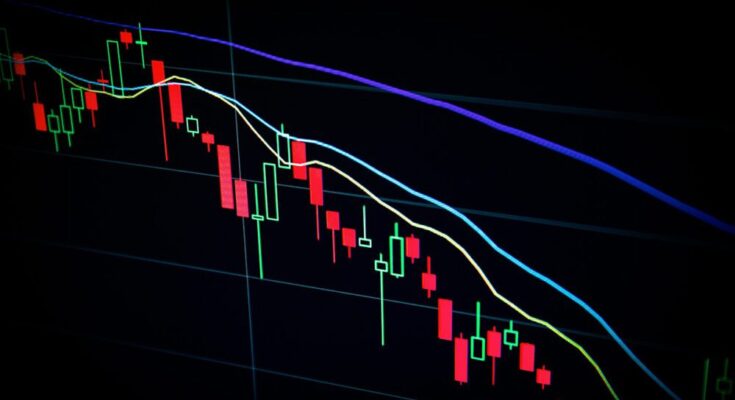Institutional and professional traders in the Netherlands are no strangers to the complexities of stock markets. From Amsterdam’s AEX index to the fast-paced world of U.S., Asian, and emerging market equities, opportunities are vast—but so are the challenges. The modern Dutch trader is no longer confined by local exchanges; instead, technology and globalisation have made it possible to analyse, select, and trade stocks across every major market in the world.
The critical question is: how do advanced traders refine their stock selection strategies to maximise returns while managing risks in such a diverse landscape?
Beyond the AEX: Expanding Horizons
The AEX index is a natural starting point for Dutch investors. With its concentration in leading Dutch companies such as ASML, Heineken, and ING, it offers a sense of familiarity and proximity. However, the downside is its relative narrowness. The AEX is heavily weighted toward specific sectors like technology and finance, leaving traders exposed to sector concentration risks.
For institutional traders, diversification is not just a cliché—it is a necessity. Expanding into global equities allows access to a broader range of industries, regions, and growth trajectories. U.S. markets provide exposure to innovative tech giants, Asian equities offer high-growth opportunities, and emerging markets introduce frontier sectors and consumer-driven expansion. By blending AEX holdings with international equities, traders can balance local familiarity with global growth potential.
Factor-Based Stock Selection
One of the most effective ways professional traders navigate broad markets is by employing factor-based strategies. Rather than relying solely on geographic diversification, they look at cross-market factors that have historically influenced returns. Common factors include:
- Value: Identifying undervalued stocks based on fundamental ratios such as price-to-earnings or price-to-book.
- Growth: Targeting companies with above-average earnings growth potential, often found in sectors like technology and healthcare.
- Momentum: Riding trends by selecting equities with strong recent performance, supported by technical indicators.
- Quality: Prioritising financially sound companies with stable earnings, strong balance sheets, and efficient management.
- Low Volatility: Building resilience with stocks that historically show lower price fluctuations.
Institutional investors in the Netherlands often combine these factors through quantitative models, ensuring a disciplined approach that reduces reliance on subjective judgment.
Timing and Market Cycles
Selecting the right stock is only half the battle. Equally important is understanding where markets are in the broader economic cycle. Dutch institutional traders frequently analyse macroeconomic indicators such as ECB policy decisions, inflation trends, and global growth forecasts to align equity strategies with expected market conditions.
For example, in periods of rising interest rates, financials and value stocks may outperform, while in expansionary phases, growth and momentum stocks often lead the charge. Advanced traders integrate cyclical awareness into their stock selection, positioning portfolios to adapt dynamically to changing market environments.
Risk Management at Scale
Institutional trading is about more than chasing returns; it is also about preserving capital. With larger portfolios, Dutch professional investors face unique challenges, including currency risk, liquidity risk, and regulatory compliance.
- Currency Hedging: Investing in U.S. or Asian equities exposes portfolios to currency fluctuations. Hedging strategies, from simple forward contracts to sophisticated derivatives, help mitigate this risk.
- Liquidity Filters: Large institutional trades can move markets. Screening stocks for adequate liquidity ensures positions can be entered and exited efficiently.
- Regulatory Oversight: Adhering to European MiFID II standards requires detailed reporting and transparency, influencing how institutions approach stock selection and execution.
By embedding risk management into the selection process, Dutch institutional traders maintain both performance potential and regulatory compliance.
Knowing When to Exit
Perhaps the most overlooked element of stock selection is deciding when to sell stocks. For many professional traders, entry signals are carefully calculated, but exit strategies are either neglected or overly simplistic. Recognising exit points is crucial to preserving gains and minimising losses.
Several approaches can help:
- Target Price Exits: Selling when a stock reaches a predetermined valuation.
- Stop-Loss Orders: Automatically exiting positions when prices fall below a set threshold, limiting downside risk.
- Trailing Stops: Allowing profits to run while setting dynamic safety nets that adjust with upward momentum.
- Fundamental Triggers: Selling when company fundamentals deteriorate, such as declining earnings or unsustainable debt levels.
Understanding and applying disciplined exit strategies ensures that even well-chosen stocks contribute positively to long-term portfolio goals. For a deeper perspective on this critical decision-making process, traders can explore resources on when to sell stocks.
The Role of Technology in Advanced Stock Selection
Technology has revolutionised stock trading in the Netherlands. Algorithmic models, AI-driven analytics, and data visualisation platforms empower institutional investors to process massive amounts of information at lightning speed.
- Algorithmic Screening: Rapidly filters global stocks for factor alignment and valuation metrics.
- Sentiment Analysis: Tracks news, social media, and analyst opinions to gauge market mood.
- Backtesting Tools: Evaluates strategies against historical data, improving confidence in stock selection methods.
By blending human expertise with cutting-edge technology, Dutch professional traders enhance both efficiency and precision in their selection strategies.
Conclusion
The Dutch stock market has long been a gateway to global finance. Today, professional traders must expand that legacy by embracing advanced selection strategies that transcend local boundaries. From factor-based approaches to disciplined exits, and from risk management to technology integration, the tools for success are firmly within reach.
By adopting a comprehensive, forward-looking equity strategy, institutional and professional traders in the Netherlands can confidently navigate markets—whether on the familiar AEX or across the world’s most dynamic exchanges.




